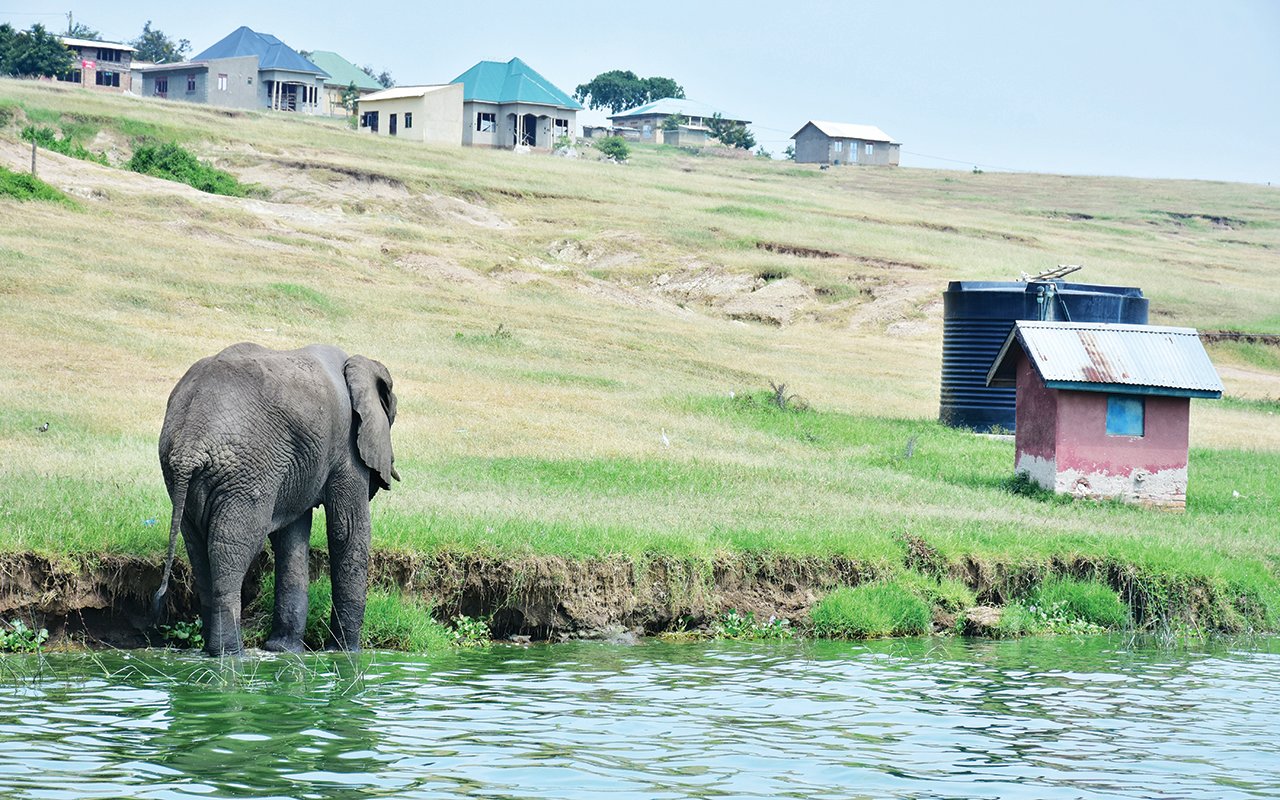On increased traffic through Murchison Falls National Park

Elephants are sone of the animals that can be found in Murchison Falls National Park. PHOTO/ISMAIL BATEGEKA
What you need to know:
- Murchison Falls National Park is home to a vast array of wildlife, including iconic species such as elephants, lions, giraffes, and buffalo.
Murchison Falls National Park, one of Uganda's most prized natural landscapes, is facing growing concerns as the volume of vehicles transiting through the park rises.
While the park remains a crucial tourist destination, the increasing traffic, primarily due to the ongoing repairs of the Karuma Bridge, poses significant risks to its wildlife and fragile ecosystems.
Uganda Wildlife Authority (UWA), responsible for managing this iconic park, faces a complex challenge; balancing the protection of the park's ecosystems with the demands of travelers passing through. This delicate balance is crucial to avoid long-term damage to Murchison Falls' biodiversity and its role as a conservation haven.
The Impact on Wildlife
Murchison Falls National Park is home to a vast array of wildlife, including iconic species such as elephants, lions, giraffes, and buffalo. These species rely on the park’s undisturbed habitats for feeding, breeding, and general survival.
However, the increase in vehicle traffic brings heightened risks of human-wildlife conflict.
Road kills: Animals crossing roads within the park are more likely to be involved in vehicle collisions, leading to injury or death for both wildlife and passengers. Stress caused by human presence can lead to the avoidance of key feeding and breeding areas, potentially causing declines in population growth and negatively affecting the park’s biodiversity.
Noise Pollution: The constant noise from passing vehicles disrupts essential wildlife activities such as communication, hunting, and mating.
Habitat Degradation and Pollution: The environmental impact of increased vehicle traffic is not limited to direct harm to wildlife. The rising number of vehicles travelling through the park contributes to habitat degradation, as pollution from vehicle emissions further threatens the park’s pristine environment.
Disruption of Animal Movements: Murchison Falls National Park spans a vast area, with many species depending on the park’s unfragmented landscapes for survival. Large mammals like elephants and buffalo need to move freely across the park in search of food, water, and breeding grounds. However, increased vehicle traffic risks fragmenting these critical habitats, disrupting natural migration patterns.
Facilitation of Poaching: Increased vehicle traffic may inadvertently facilitate illegal poaching activities within the park. With more vehicles entering the park, poachers can blend in with legitimate travelers, using roads to quickly access remote areas. This creates a significant challenge for UWA, which must allocate additional resources to monitor vehicle movements and deter illegal activities. Increased traffic creates more opportunities for poachers to exploit weaknesses in surveillance and enforcement, putting these animals at even greater risk.
Long-term impact
0ne of the key attractions of Murchison Falls National Park is its untamed wilderness, which draws eco-tourists from around the world. The park’s appeal lies in its tranquility and the opportunity for visitors to observe wildlife in its natural habitat. However, if the park's ecosystems and wildlife are negatively affected by increased traffic, it could damage Uganda’s reputation as a top eco-tourism destination.
Tourists who expect peaceful encounters with nature may be deterred by crowded roads, stressed animals, or visible signs of environmental degradation. Over time, this could lead to a reduction in tourist numbers, affecting the local economy and the revenue that supports conservation efforts.
Alternative routes
While the convenience of travelling through Murchison Falls National Park is understandable, UWA strongly encourages travellers to consider alternative routes to minimise the impact on the park’s wildlife and environment. Options like the Masindi Port route or other ferry crossings provide viable alternatives that reduce pressure on the park’s ecosystems. These routes offer similar convenience while helping to preserve the park’s natural integrity.
Additionally, travellers should remain patient during the construction of the Karuma Bridge, which, once completed, will offer a more efficient alternative to traveling through the park. Until then, UWA urges the public to exercise caution, adhere to park guidelines, and drive responsibly to mitigate the environmental impact on Murchison Falls.
Ultimately, protecting Murchison Falls National Park requires cooperation from all stakeholders—travellers, local communities, and government authorities alike. By choosing alternative routes, observing park regulations, and respecting the delicate balance between human activity and wildlife conservation, we can ensure that Murchison Falls continues to thrive as one of Uganda’s most treasured natural wonders, preserved for present and future generations.
Vanice Mirembe Daawa, Manager Conservation Education and Awareness, UWA




